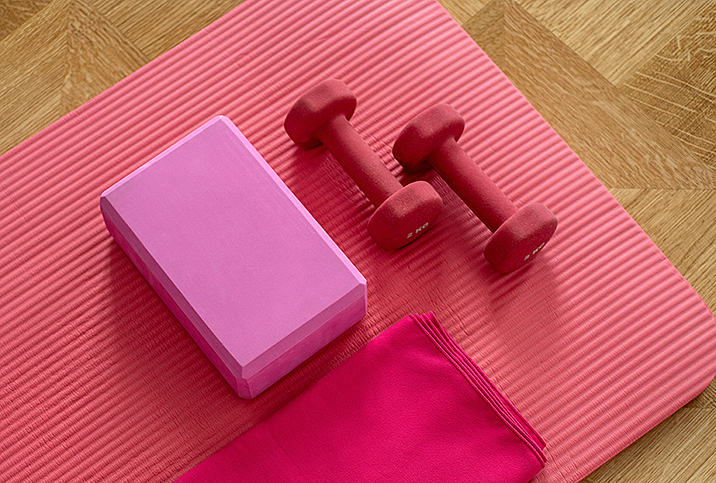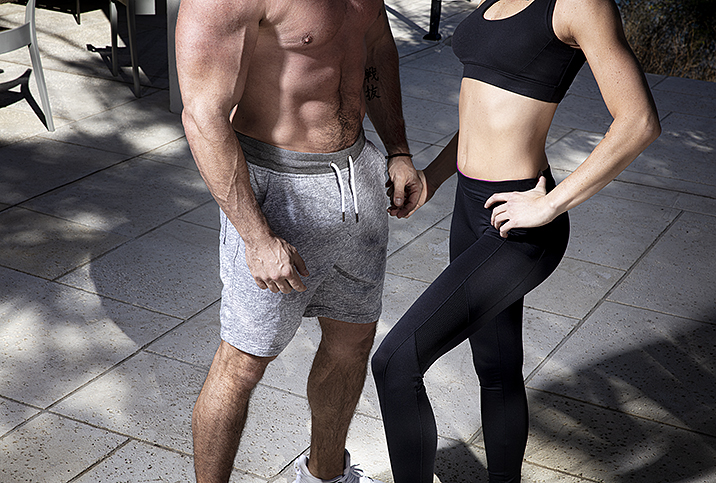Overcome Your Workout Commitment Issues

One of the biggest challenges of gym-free workouts is finding the motivation and personal accountability to follow through on your exercise regimen. Unless you are almost obsessive about fitting workouts into your schedule, it’s very easy to let a few days or weeks slip by without ever breaking a sweat.
Here’s how to make your gym-free workouts stick:
Make it nonnegotiable
While you may find yourself wanting to skip workouts because they seem like an extra item on your to-do list, it’s important to remind yourself that exercise supports all areas of your health. While regular exercise is good for your overall physical health, it’s also good for your mental health. It can alleviate everyday stress and even help with conditions such as anxiety and depression. When you make exercise a nonnegotiable activity, like going to work or brushing your teeth, you’ll likely see improvements in all facets of your life.
Schedule it
Take a few minutes at the beginning of each week to schedule your workouts, aiming for three to five sessions each week for a grand total of 150 minutes of exercise. When you schedule your workouts, choose which days and times you’ll work out and which exercises you’ll do. This can vary day to day but should be detailed so you don’t have to spend time preparing on the day of your workout. Once you know what you’ll be doing, put it into your calendar and block out the time as “unavailable,” just as you would for a doctor’s appointment. This way, other people in your life will be less likely to interfere, and you’ll be more likely to stick to your plans.
Find a workout space
One benefit of a gym is that you have a designated space where you can knock out a workout session and then leave. If you’re at home, this can be more difficult because it’s easy to get pulled away from working out by unsympathetic family members or a pile of dirty dishes. If you find home-based workouts difficult, try creating a designated workout space. This can be a nearby park, a corner of your room with a yoga mat, or a full-fledged garage gym. Regardless, the idea is to create a sacred workout space where you’re less likely to get distracted. You should see it as your own personal gym, a separate place that you “own” where you can work out and then leave to return to your everyday life.
Mix it up for a well-balanced routine
A well-balanced workout routine includes several fitness components, such as flexibility, cardiovascular endurance, muscular strength and endurance. Someone who only lifts heavy weights may miss out on flexibility and cardiovascular endurance, while someone who only runs may miss out on muscular strength.
The best practice is to incorporate a little bit of everything. Consider the following possible schedule:
- Monday: 20 minutes cardio, 10 minutes yoga or stretching
- Tuesday: 30 minutes strength training
- Wednesday: 20 minutes cardio, 10 minutes yoga or stretching
- Thursday: 30 minutes strength training
- Friday: 20 minutes cardio, 10 minutes yoga or stretching
A simple schedule like this fits everything in while meeting the 150-minute goal. How you personally include cardio, stretching and strength training is up to you. You can opt for high-intensity interval training (HIIT), which can serve as both strength training and cardiovascular training. You could include using a foam roller on your muscles in place of stretching. You could try jumping rope or cycling in place of running. The combinations are endless.
If working out five days per week doesn’t fit your schedule, consider three 50-minute workouts or four 40-minute workouts instead.
Get started
When it comes to exercise, there’s no time like the present to get started. Just remember to ease your way into your routine and listen to your body. If something hurts, stop doing it. If your body is screaming at you to take a break, slow down and take a drink of water. You can’t expect to run three miles or lift 200 pounds if you’ve been on an exercise hiatus for years.
Start where you are and understand that fitness improves with time and consistency. It’s better to do less initially and stay healthy than to overdo it and end up getting injured.


















